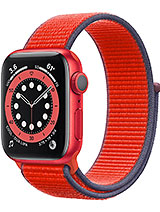3D Printed Gearbox - Speed Test [Episode 2] By 3D Printer Academy
You've probably seen gearboxes like this before, however, they're usually set up as a gear reduction, but what, if we reverse it spin it from the other side? How fast can it go? Why don't we use this mechanism in more things, or is it already widely used? Welcome to episode 2 of the gearbox series in this series? We'll answer those questions and more so, as you can see, I have 3d printed quite a lot of gears, and I've gone through quite a few iterations. I've tried larger gears with larger teeth, tried some double-helical gears tried some thinner gears with medium-sized teeth and a little thicker gear, also double-helical help, and this one's actually injection molded, not sure how that ended up there. But after all of that, I ended up going with my original design, because the smaller teeth have significantly less friction. So, in episode one of the gearbox series I talked about how the spacing on the original gearbox was really loose and everything didn't quite fit together perfectly. So, instead of printing the entire base multiple times, I just printed two test pieces for the axle spacing with the peg spaced 61 millimeters apart, you can see the gears are just a little too loose and that could cause the whole gearbox to strip under the high torque conditions. It does spin pretty smooth, though next we have the 60 millimeter peg.
Spacing you can see this one is a little too tight, and it does not allow the gears to spin freely. So it looks like somewhere between 60 and 61. Millimeter spacing should be perfect, so it actually took me two times to get the base correct. So I had to switch the gears over from one to another, but that was pretty easy boom. Just like that, and now the last thing is the handle.
At first, I decided to use a carbon fiber rod because I thought it'd be a lot stronger, but I had a lot of issues with the connection point between the rod and the small gear, because this small gear is going to have to handle the majority of the torque in the system. I made it extra beefy and the handle slides on like so after installing the handle the gearbox is ready for testing. So, overall, I would say this design was a 99 success, but how fast did it go using the tap function? On my metronome app, I was able to determine that the rotation of the handle was about 92 rpm, since the gear ratio of this gearbox is 81 to 1. That means that the last gear was probably spinning about 7000 rpm. In case you're wondering I was spinning the gearbox as fast as I could, and why don't I attach a drill to it.
Well, I lost the charger for my drill when we were moving, but don't worry I'll buy another one for you guys. The files for this gearbox are available for free on my website. WWW.3Dprinteracademy. Com feel free to support me on Patreon. So that way I can continue to provide these files for free for everyone to enjoy.
I'm considering making a video about how these gears work and what their applications could be, how much energy they can produce. So if you want to see that video, let me know in the comment section below thanks and have a good one.
Source : 3D Printer Academy
![3D Printed Gearbox - Speed Test [Episode 2]](https://img.youtube.com/vi/bvaeiqhmDNg/maxresdefault.jpg)
























